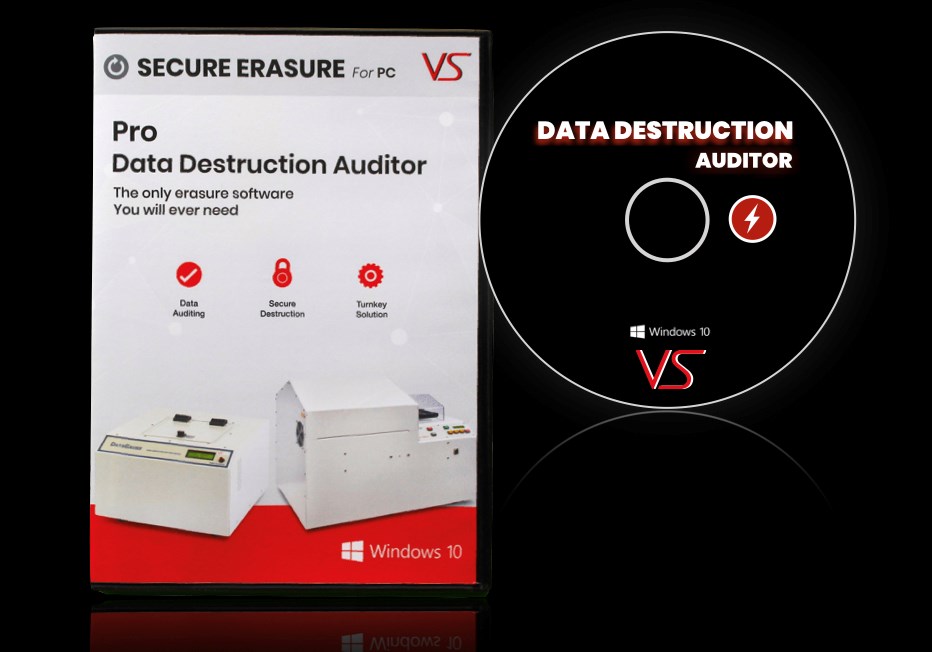Data Destruction Solutions: A Crucial Element in Your Cyber Security Strategy
Data Destruction Solutions: A Crucial Element in Your Cyber Security Strategy
Blog Article
The Significance of Effective Data Devastation Practices in Shielding Sensitive Information and Ensuring Computer System Safety And Security
In an age where data breaches are significantly usual, the relevance of effective data damage methods can not be overemphasized. Organizations face substantial threats when sensitive information is inadequately thrown away, possibly leading to unauthorized gain access to and serious financial consequences. Applying durable data destruction techniques not just reduces these dangers however additionally aligns with lawful conformity needs, ensuring that organizations promote their credibility and foster customer count on. The inquiry continues to be: what certain approaches can be utilized to improve these methods, and how can organizations properly incorporate them into their overall cybersecurity structure?
Comprehending Data Devastation
Recognizing data devastation is important in today's electronic landscape, where sensitive details can quickly be endangered. Effective information destruction includes not simply ensuring however deleting data that information is irretrievable through comprehensive approaches. This process is important for companies that manage personal customer info, intellectual property, or interior documents, as any breach can lead to extreme financial and reputational consequences.
Data devastation encompasses different strategies, consisting of shredding physical media, degaussing magnetic storage space devices, and using software-based services that overwrite information multiple times. Each technique offers a specific function and must line up with the level of sensitivity of the details being taken care of. As an example, physical destruction is typically liked for hard disk drives containing highly confidential data, while software methods might be enough for less sensitive info.
Additionally, adhering to industry standards and regulations, such as the General Information Defense Law (GDPR) or the Medical Insurance Transportability and Liability Act (HIPAA), is crucial for conformity and to reduce legal risks. Organizations must develop a robust information damage plan, train employees on finest methods, and on a regular basis examine their treatments to make sure that all sensitive info is gotten rid of firmly and properly.
Threats of Inadequate Practices
Inadequate data damage methods expose organizations to significant threats that can have significant effects. When delicate details is not effectively disposed of, it remains at risk to unapproved gain access to, which can result in data violations and identification theft. Such cases not just compromise the security of individuals but likewise stain the company's track record, resulting in a loss of consumer depend on and potential economic repercussions.
Additionally, regulatory conformity is progressively stringent in several markets. Failure to stick to data destruction guidelines can result in substantial fines and lawsuits versus organizations. These penalties can draw away and strain financial resources interest from core company procedures.
Furthermore, the abuse of recurring data can result in copyright burglary or corporate espionage, threatening affordable advantages (data destruction). The influence of insufficient information damage expands past immediate economic losses; it can likewise result in long-term damages to brand name integrity and market position

Organizations need to recognize that information safety is not solely about avoiding breaches; it likewise encompasses the responsible management of data throughout its lifecycle. Ignoring efficient data damage methods can have tragic effects, emphasizing the need for durable procedures to alleviate these dangers.
Finest Practices for Information Damage
Executing reliable data damage practices is important for securing sensitive info and preserving conformity with regulative criteria. Organizations should adopt a multi-faceted method to ensure that information is irretrievable, consequently stopping unauthorized accessibility and prospective breaches.
First, information ought to be categorized based upon level of sensitivity, allowing organizations to use ideal devastation methods tailored to the degree of danger. For digital information, using software-based data-wiping tools that adhere to market requirements can effectively overwrite existing data. Physical damage techniques, such as shredding or degaussing, are vital for gadgets that keep delicate information, guaranteeing total obliteration.
Establishing a clear data retention policy is vital, describing how much time various types of info should be maintained prior to destruction. Routine audits of data storage space systems are also essential to determine outdated or unneeded information needing removal.
Furthermore, training employees on the value of data destruction and the particular protocols to adhere to fosters a society of safety and security within the organization. Maintaining documents of data damage processes supplies liability and sustains conformity with inner plans and exterior regulations. By adhering to these ideal practices, organizations can substantially minimize the dangers connected with information exposure.
Legal and Conformity Factors To Consider

Failure to comply with these regulations can lead to severe charges, consisting of significant fines and reputational damage. Organizations has to execute a check it out durable information destruction plan that straightens with these legal frameworks and supplies clear standards on the appropriate methods of information disposal, whether physical shredding or electronic wiping.
In addition, maintaining documents of data damage activities is crucial for demonstrating compliance during audits or examinations. By focusing on lawful and compliance considerations, organizations can improve their information safety and security position and foster depend on with customers and stakeholders, inevitably contributing to a much more safe information monitoring atmosphere.
Benefits of Effective Data Destruction
Efficient data devastation practices expand beyond mere conformity; they supply considerable benefits to organizations that prioritize them. By making certain that sensitive info is irretrievably ruined, organizations minimize the risk of data violations and the possible economic effects related to them. This positive technique not just safeguards against unauthorized gain access to yet additionally boosts the overall credibility of the organization in the eyes of stakeholders and clients.
Implementing durable information devastation approaches, such as physical devastation of storage space gadgets or sophisticated data wiping techniques, adds to the conditioning of a company's cybersecurity position. data destruction. It decreases the probability of intellectual home burglary and secures exclusive details, therefore keeping an affordable side out there

Conclusion
To conclude, effective data destruction practices are vital for securing delicate details and enhancing total computer system safety and security. By applying comprehensive techniques such as software application, shredding, and degaussing overwriting, companies can minimize the threats connected with unauthorized access and information violations. Adherence to governing standards, consisting of GDPR and HIPAA, additional enhances conformity and More Bonuses protects against legal repercussions. Eventually, a dedication to robust information devastation strategies fosters a culture of responsibility, thus enhancing an organization's cybersecurity posture and keeping customer trust.

Report this page